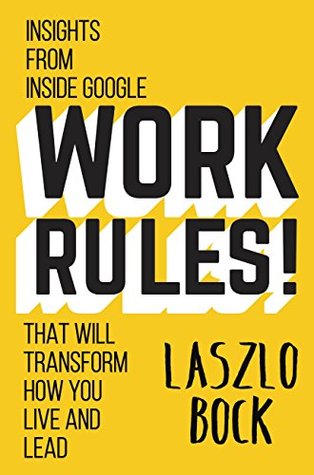More on this book
Community
Kindle Notes & Highlights
Progression through these levels is a function of a person’s scope, impact, and leadership.
People of course care about promotions, and promotions to director and executive are very big deals.
We found that even such a subtle distinction as the word order of the title caused our people to fixate on the difference between the levels.
So we eliminated the difference.
To be transparent, it’s become harder to hold this line as w...
This highlight has been truncated due to consecutive passage length restrictions.
Titles that we used to ban outright, like those containing the words “global” or “strategy,” ...
This highlight has been truncated due to consecutive passage length restrictions.
We had banned “global” because it’s both self-evident and...
This highlight has been truncated due to consecutive passage length restrictions.
“Strategy” is similarly ...
This highlight has been truncated due to consecutive passage length restrictions.
putting the word “strategy” in a title is a great way to get people to apply for a job, but it does little to change the nature of the work.
‘But how can I get them to do what I want them to do if I don’t have the title?’ He lasted less than six months.”
But we also eliminate other signifiers and reinforcers of hierarchy:
Our most senior executives receive only the same benefits, perquisites, and resources as our newest hires. There are no executive din...
This highlight has been truncated due to consecutive passage length restrictions.
Relying on data—indeed, expecting every conversation to be rooted in data—upends the traditional role of managers.
It transforms them from being providers of intuition to facilitators in a search for truth, with the most useful facts being brought to bear on each decision.
The result is synthesis, a closer approximation of truth than if we had relied on mere pronouncements.
One of the core principles of Google has always been “Don’t politick. Use data.”
People make all kinds of assumptions—guesses, really—about how things work in organizations.
Most of these guesses are rooted in sample bias.
This is classic sample bias, where someone is drawing conclusions based on the small, flawed sample that they happen to see.
The other warning sign is a conspicuous absence of information.
A promotion packet that has no constructive feedback is actually a warning sign to review committees.
It turns out that when you present people with reality, they want to get better.
It would have been easy to keep asserting that the process worked.
But far better to bust the myths once and for all with facts, and then make those facts freely available to anyone.
We test ourselves and Google products frequently to make sure our dec...
This highlight has been truncated due to consecutive passage length restrictions.
every single day in 2010 we ran more than thirty experiments to uncover what would best serve our users. And this was just for our search product.
Almost any major program we roll out is first tested with a subgroup.
Too often, management makes a decision that applies unilaterally to the entire organization.
What if management is wrong?
What if someone has a better idea? What if the decision works in one co...
This highlight has been truncated due to consecutive passage length restrictions.
It’s crazy to me that companies don’t experiment ...
This highlight has been truncated due to consecutive passage length restrictions.
In addition to stripping leaders of the traditional tools of power and relying on facts to make decisions,
we give Googlers uncommon freedom in shaping their own work and the company.
Utilization varies in practice, with some individuals focusing virtually 100 percent on side projects and many others not having any side projects at all.
The use of 20 percent time has waxed and waned over the years, humming along at about 10 percent utilization when we last measured it.
In some ways, the idea of 20 percent time is more important than the reality of it.
It operates somewhat outside the lines of formal management oversight, and always will, because the most talented and creat...
This highlight has been truncated due to consecutive passage length restrictions.
Twenty percent time has always operated on a somewhat ad hoc basis, providing an outlet for the company’s brightest, most restless, and most persistent employees—for people determined to see an idea through to completion, come hell or high water.
Googlers don’t restrict themselves to creating products. They also involve themselves in deciding how we run the company.
we changed the basis for bonus calculation from actual salaries to the median salary of all people in that job. That ensured that both people received a bonus commensurate with their impact.
There is a well-documented average salary difference between men and women.
One source of this is a difference in men’s and women’s propensity to negotiate w...
This highlight has been truncated due to consecutive passage length restrictions.
The reports of any vice president with a hundred or more respondents are automatically published to the entire company,
managers’ results are not factored into performance ratings or pay decisions.
We want employees to be scathingly honest, and managers to be open to improvement rather than defensive.
Googlegeist instead focuses on the most important outcome variables we have:
innovation
execution
retention
we have five questions that predict whether employees a...
This highlight has been truncated due to consecutive passage length restrictions.


